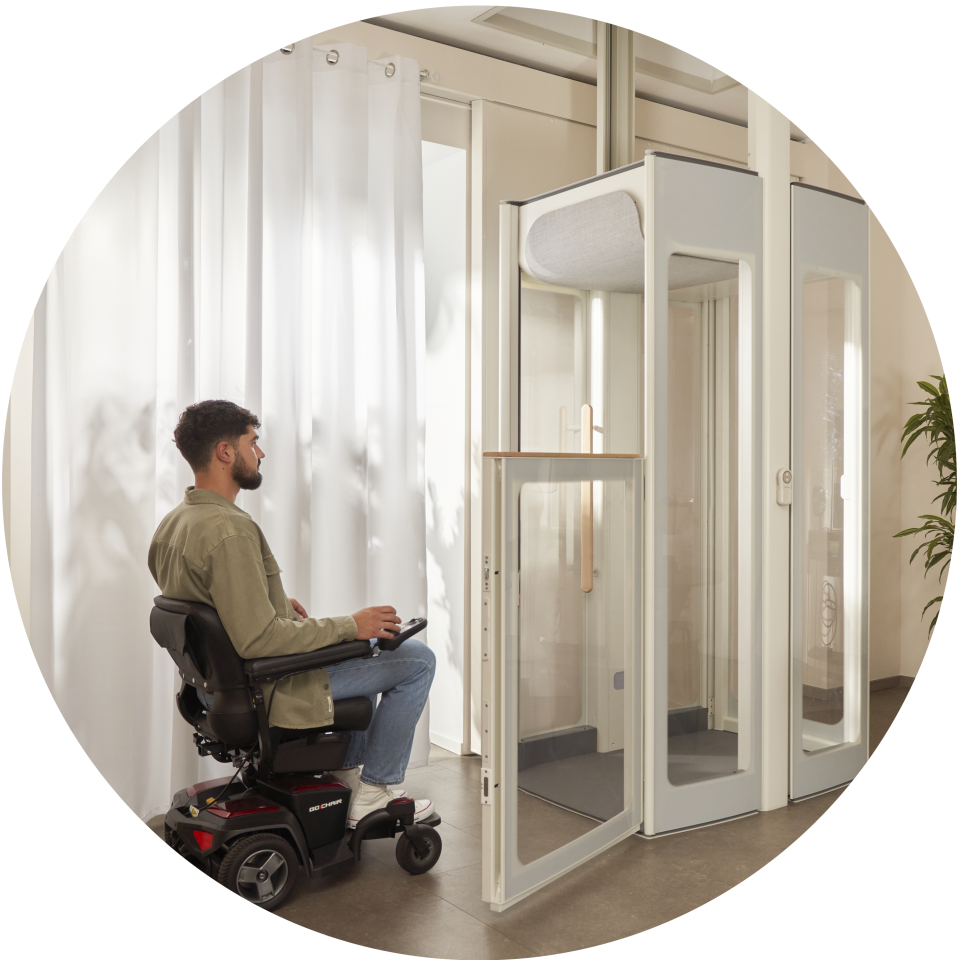Homelift grants
If you are disabled and need to make accessibility amendments to your home, there are grants available for this through local councils. A homelift can qualify as one of these adaptations. Those who face mobility difficulties often also face financial barriers, so homelift grants are crucial in making homelifts more accessible to those in need.
Types of homelift grants available in the UK
- Disabled Facilities Grant (DFG): This is a grant you can access through your local council for adaptations to your home, such as widening doors, installing wheelchair ramps, and homelifts. It is for people who are physically disabled or have additional needs which necessitate home alterations. It is a means-tested grant which depends on your household income and savings.
- Local authority grants: Different local authorities have their own additional schemes to help people with home improvements on top of DFG grants. The eligibility criteria will be different for each local authority. It is sensible to go to your own local authority’s website to find out if there is any additional support available.
- Charity and non-profit grants: There are also numerous charitable organisations which offer grants or funding for home alterations for those who cannot afford to do it otherwise. For example, The Independence at Home Charity and Turn2Us have opportunities to apply for grants on their websites.
Eligibility criteria for homelift grants
Typical eligibility checks for homelift grants will include:
- Financial means testing: Your household income and savings will be taken into account when calculating the amount you are eligible for.
- Disability assessments: This may involve an occupational therapist or trained assessor coming to see you. They’ll assess what changes you need to your home.
- Property ownership: Homeowners, tenants, and landlords can apply for grants for homelifts. The process for establishing eligibility will be different in each case.
You can see if you qualify for a DFG grant through this self assessment portal.
How to apply for a homelift grant
The process for applying for a homelift grant will involve the following steps:
- Contacting local authorities or relevant charities about grants that are available to apply for.
- Preparing any necessary documentation for the application process. This might include proof of disability or an income assessment.
- Partaking in visits from occupational therapists or other professionals whose job it is to assess your needs. They will make a recommendation for the work that needs to be done, and the amount of money you may receive will depend on this recommendation.
- Getting quotes from registered contractors. Registered contractors are approved by the government to do certain kinds of work. It is advisable to get three quotes from different contractors for each type of adaptation you want to do.
- If you are approved, you will likely receive the money in instalments as the work progresses. Please note that you cannot apply for DFG when you have already started work on the project.
Tips for securing funding for a homelift
- Check the eligibility criteria: each grant, whether a local council DFG or a charity funded grant, will have eligibility criteria. This will include the type of disability you have, and means testing so your application will involve disclosing your household income and savings.
- Get some good quotes: It is best practice to obtain 3 different quotes from 3 separate government approved ‘registered’ contractors. This shows you have done your due diligence and increases your chances of your application being approved.
- Fill out the form correctly: Ensure that your personal information eg. your name, address, phone number and email, are all spelt correctly and are up to date. Having someone proofread the form before you send it is advisable.
- Gather strong supporting evidence: Ensure you provide ample evidence of any medical conditions you have, for example, doctor’s letters or an assessment from an occupational therapist. You will also need to include: property details, quotes for the proposed work, and evidence of income.
- Seek help from a grant advisor: For specific advice on your application, contact a grant advisor to help you. They will have the expertise to ensure your application is accurate and more likely to be successful.
Additional financial support options
Some additional financial support options to look into include:
- VAT relief: You can claim VAT relief on certain building work if you have a disability. There are detailed eligibility criteria for this.
- Low interest loans: You can apply for a budgeting loan if you have been on certain benefits for 6 months or more. It is an interest free loan, and the repayments are taken automatically from your benefits.

Ready to start your homelift journey?
There are many ways to get financial support when purchasing and installing a homelift. There are grants provided by local councils in the form of Disability Facilities Grants and by charities. You can also look at applying for VAT relief and low interest loans to help with your homelift purchase.
With this in mind, take a look at some different homelift options so that you can start your journey to a smoother way of living.